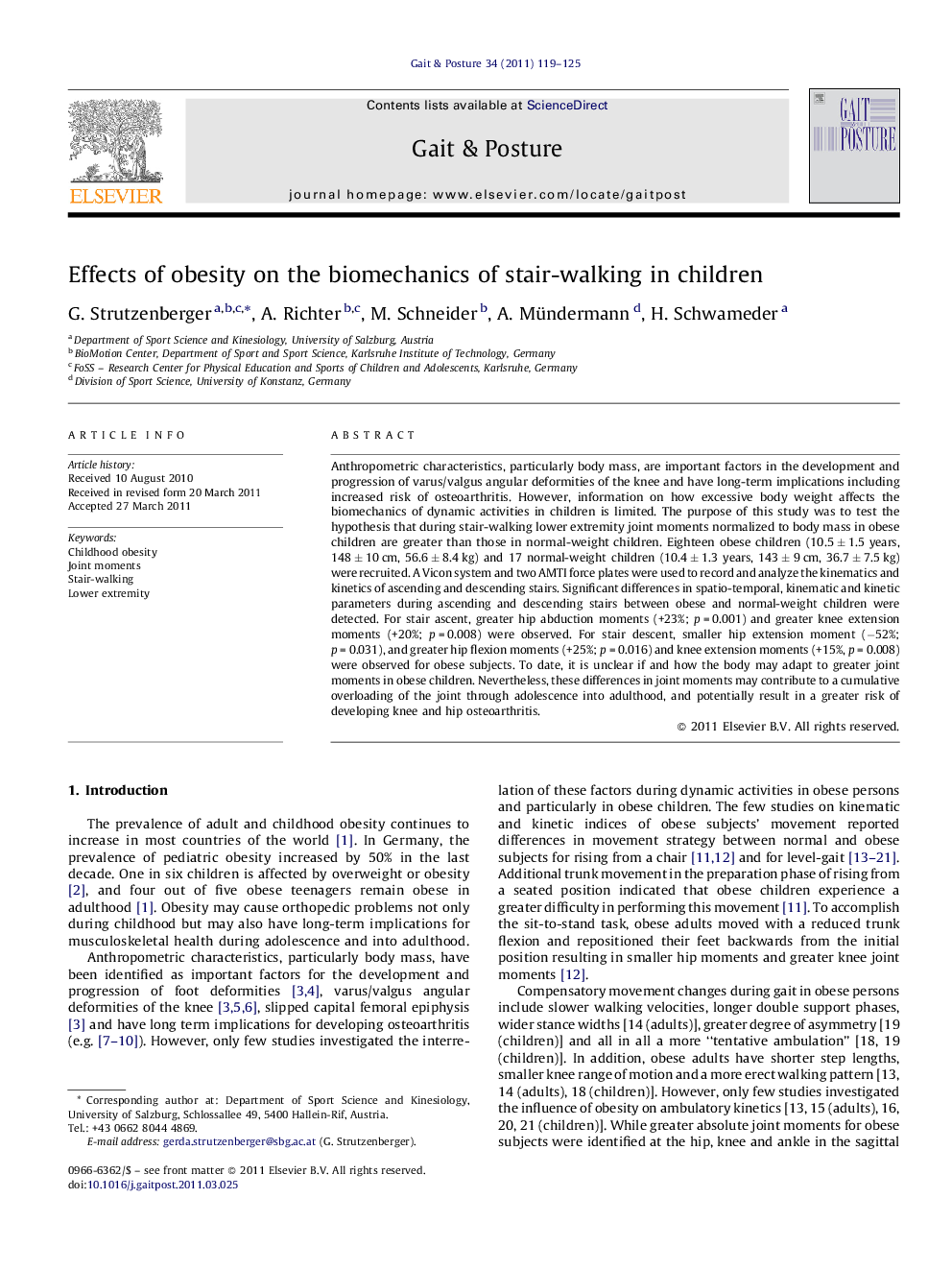| Article ID | Journal | Published Year | Pages | File Type |
|---|---|---|---|---|
| 6208301 | Gait & Posture | 2011 | 7 Pages |
Anthropometric characteristics, particularly body mass, are important factors in the development and progression of varus/valgus angular deformities of the knee and have long-term implications including increased risk of osteoarthritis. However, information on how excessive body weight affects the biomechanics of dynamic activities in children is limited. The purpose of this study was to test the hypothesis that during stair-walking lower extremity joint moments normalized to body mass in obese children are greater than those in normal-weight children. Eighteen obese children (10.5 ± 1.5 years, 148 ± 10 cm, 56.6 ± 8.4 kg) and 17 normal-weight children (10.4 ± 1.3 years, 143 ± 9 cm, 36.7 ± 7.5 kg) were recruited. A Vicon system and two AMTI force plates were used to record and analyze the kinematics and kinetics of ascending and descending stairs. Significant differences in spatio-temporal, kinematic and kinetic parameters during ascending and descending stairs between obese and normal-weight children were detected. For stair ascent, greater hip abduction moments (+23%; p = 0.001) and greater knee extension moments (+20%; p = 0.008) were observed. For stair descent, smaller hip extension moment (â52%; p = 0.031), and greater hip flexion moments (+25%; p = 0.016) and knee extension moments (+15%, p = 0.008) were observed for obese subjects. To date, it is unclear if and how the body may adapt to greater joint moments in obese children. Nevertheless, these differences in joint moments may contribute to a cumulative overloading of the joint through adolescence into adulthood, and potentially result in a greater risk of developing knee and hip osteoarthritis.
